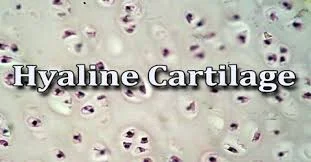CHARACTERSTICS OF
SYNOVIAL JOINT
.
All synovial joints have certain characterstics in common.
1.
Articular Or Hylaine Cartilage :
2.
Capsule Or Capsular Ligament
3.
Synovial Membrane
4.
Other Intracapsular Structures
5.
Extracapsular Structures
6.
Nerve And Blood Supply .
v
ARTICULAR OR HYLAINE CARTILAGE:
Ø
The parts of the bones which are in contact are
always covered with hyaline cartilage.
Ø
It provides a smooth articular surface and is
strong enough to absorb compression forces and bear the weight of the body.
Ø
The cartilage lining , which is up to 7 mm thick
in young people, becomes thinner and less compressible with age .
Ø
This leads to increasing stress on other
structures in the joint.
Ø
Cartilage has no blood supply and receives its
nourishment from synovial fluid.
v
CAPSULE OR CAPSULAR LIGAMENT:
o
The joint is surrounded and enclosed by a sleeve
of fibrous tissue which holds the bones together.
o
It is sufficiently loose to allow freedom of
movement but strong enough to protect it from injury.
v
SYNOVIAL MENBRANE :
This is composed of epithelial cells and is
found.
1.
Lining the capsule.
2.
Covering those parts of the bones within the
joint not covered by articular cartilage.
3.
Covering all intracapsular structures that do
not bear weight.
v
SYNOVIAL FLUID :
·
This is a thick sticky fluid, of egg-white
consistency , secreted by synovial membranes into the synovial cavity.
·
Little sacs of synovial fluid or bursae are
present in some joints, e.g. the knee.
·
They act as cushions to prevent friction between
a bone and a ligament or tendon, or skin where
a bone in a joint is near the surface.
FUNCTIONS:
1.
Synovial fluid provides nutrients for the
structures within the joint cavity .
2.
Contains phagocytes , which remove microbes and
cellular debris.
3.
Act as a lubricant
4.
Maintains joint stability
5.
Prevents the ends of the bones from being
separated , as does a little water between two glass surfaces.
v
OTHER INTRACAPSULAR
STRUCTURES:
·
Some joints have structures within the capsule ,
but outside the synovial membrane ,which assist in maintenance of stability ,
e.g . fat pads and menisci in the knee joint.
·
When these structures do not bear weight they
are covered by synovial membrane.
v
EXTRACAPSULAR STRUCTURES:
Ø
LIGAMENTS
that blend with the capsule provide additional stability at most joints.
Ø
MUSCLES or their tendons also provide stability and
stretch across the joints they move .
Ø
When the muscle contracts it shortens , pulling
one bone towards the other.
v
NERVE AND BLOOD SUPPLY :
Nerves and blood vessels crossing a joint
usually supply the capsule and the muscles that move it.
MOVEMENTS AT SYNOVIAL JOINTS.
movements at any given joint depends on various factors, such as the tightness of the ligaments holding the joint together ,how well the bones fit and the presence or absence of intracapsular structures.
HIT LIKE AND SHARE












0 Comments